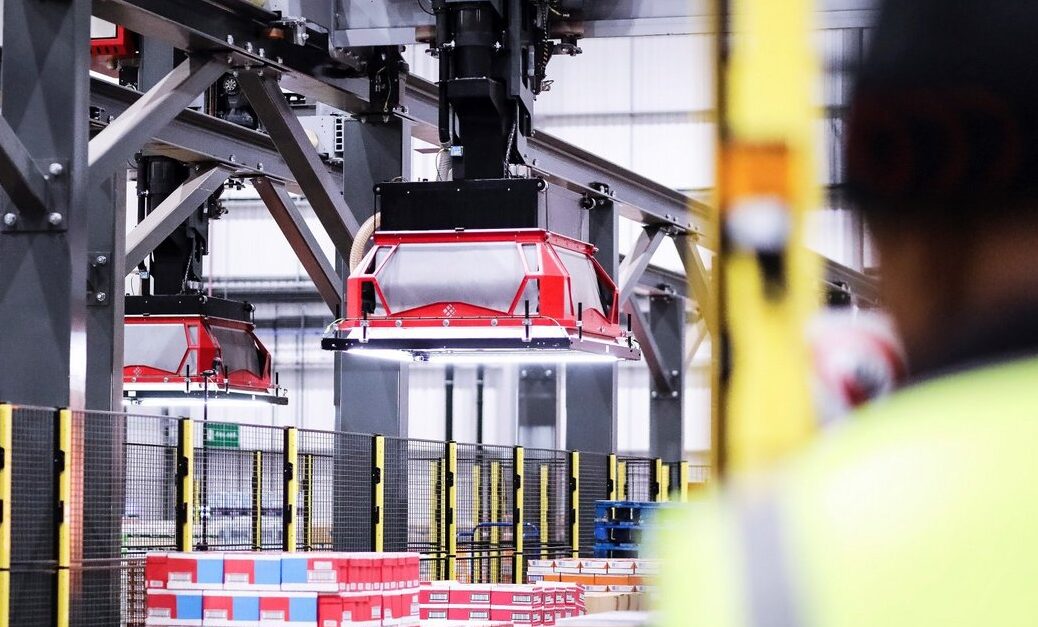Here is your data lake: Go fish!


By Jan Kristensen, Körber Supply Chain
Ten years into the digital revolution within warehouse automation, a surprisingly large part of our customers still doesn’t collect data. Among those who collect, many don’t analyze data. Of those who analyze, a surprisingly large part doesn’t respond to the output. Conclusion: There is still a very large potential for digitalization within warehousing.
Domain knowledge or data scientists?
Let’s look at it backwards to try to understand why those who collect large amounts of data don’t harvest the benefits, and how you can tap into the potential.
In the early days of the digital transformation, many of us – or at least I – imagined that if we just had a gigantic database, optimizations and insights would come pouring out of it. Big data was the big buzz.
Now, with the tools available to collect all that data and create a giant data lake, reality is that the sheer amount of data is too overwhelming. Especially if you don’t have the necessary domain knowledge to draw meaningful insights and actions.

Inhouse data scientists may be excellent at analyzing data, but without the domain knowledge and operational insights possessed by operators and providers of warehouse automation systems, they often search in blindness for even the most obvious insights.
Access to the data lake doesn’t put food on the table if you don’t know how to fish. To fully utilize the data, you need to apply the domain knowledge from your operators and your equipment suppliers.
Sorry, we don’t have time to save an hour a day
Those who collect data without acting on it actually often have an excuse we all recognize: lack of time. I completely understand. We are all busy, and sorting through your master data can lead to a lot of work across your operation. But the answer always reminds me of the old cartoon with the people from the stone age who say “No thanks, we are too busy” to the man offering them wheels while they are sweating pushing a cart full of heavy rocks.
Create a small data pond and catch value
Then there is the rest of you. Those who would willingly accept the wheel, if only you had a cart ready to be pushed. Where do you start?
Create a small data pond and catch value
Then there is the rest of you. Those who would willingly accept the wheel, if only you had a cart ready to be pushed. Where do you start?
First, you start by collecting data to create a baseline. Preferably data reflecting quality, operational availability of your equipment, or another output that allows you to measure progress.
Next step, if you really want value from your data, is to create projects where you match these data with master data. Way too often, warehouse master data is wrong or inadequate. If you can identify wrong master data like volume or box sizes, you can create a positive impact all through your value chain down to how many boxes fit in a truck.
When we combine the ability to identify wrong master data with insights into alarms and machine downtime, we can discover if certain types of alarms are triggered by specific products, a certain weight range, or other product parameters. As simple as it sounds, and it can create a massive impact on the amount of goods that flow through your warehouse.
Conclusion – focus on data quality and domain knowledge
Although the digital revolution is not happening as fast as expected, warehouses can still gain a huge competitive edge by utilizing their data. But we must acknowledge that it is not enough to collect large amounts of data. We must focus on the quality of our data collection, use the domain knowledge of operators and suppliers, and perhaps most importantly start acting on the insights to create business value.
Today, we are able to create a lot of insights, and it is my experience that when we start acting on these insights, we can take huge steps towards the long-awaited benefits of the digital revolution.
Jan Kristensen is Head of Research & Development for Körber Supply Chain Denmark

Supply Chain Moves
Supply Chain Moves is a publication dedicated to the supply chain industry, particularly the companies, people and events that help drive global commerce.





